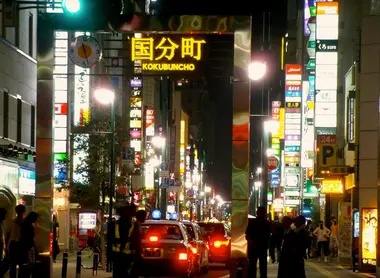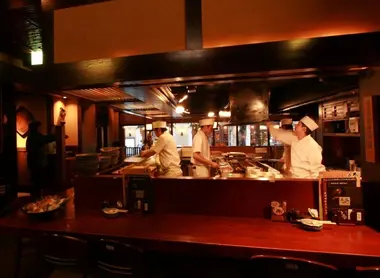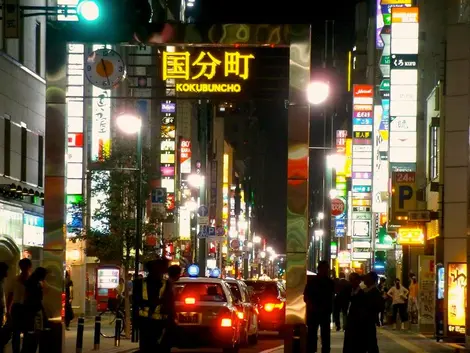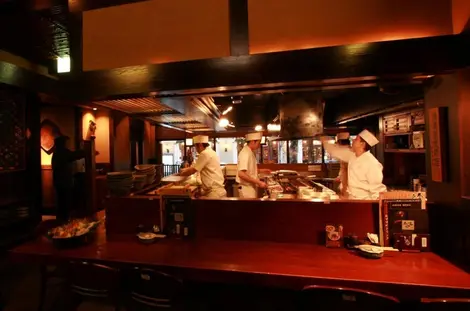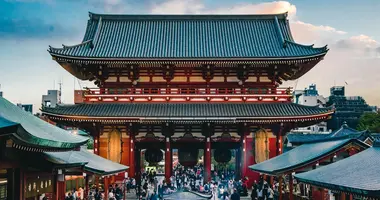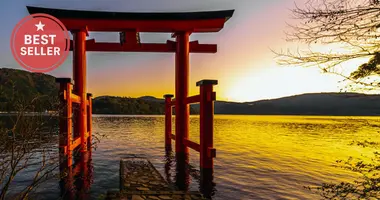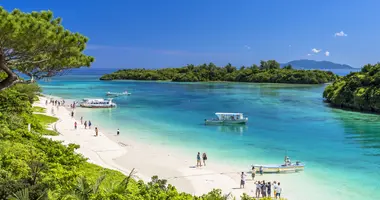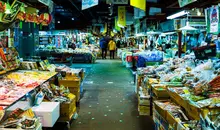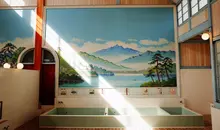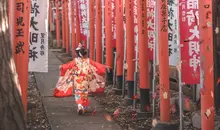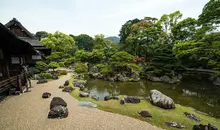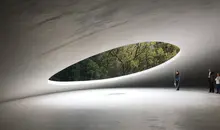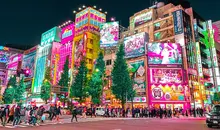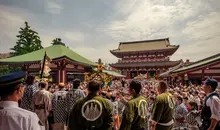Kokubunchô Sendai
- Published on : 20/10/2014
- by : G.L.
- Youtube
Kokubunchô is the liveliest entertainment district in Sendai and the entire Tohoku region, with around 3,000 establishments in a relatively compact area. This emblematic district, often compared to Tokyo's smaller Kabukichô, is divided into several distinct zones that attract both students and salarymen looking to relax after work. For visitors, Kokubunchô offers an immersion in authentic Japanese nightlife, local culinary specialties such as gyûtan, and an electric atmosphere characterized by colorful neon lights and energetic touts trying to lure customers into their establishments.
Kokubunchô's history and location
Located in the heart of Sendai, Kokubunchô stretches between Jozenji-dori and Hirose-dori avenues, covering an area of around 900 by 250 meters. This strategically located district lies between the main railway station and Nishi-kôen Park, about 20 minutes' walk from Sendai station along the main Aoba-dôri avenue, then turning left onto Bansui-dôri.
The district's history goes back many centuries. The main avenue of Kokubunchô once served as a passageway for samurai processions traveling between Sendai and ancient Tokyo. This historical importance has evolved over time, gradually transforming the area into an urban entertainment center. The current structure of the district follows a checkerboard pattern with clearly marked exits to the main streets, simplifying navigation for visitors, even on the liveliest of evenings.
The district's different zones and atmospheres
Kokubunchô is basically divided into three distinct zones, each with its own atmosphere and clientele. This organization makes it easy for visitors to find the atmosphere that suits their tastes and budget.
The first zone comprises low-cost eateries and pachinko bars. This is the most accessible and affordable part of the district, particularly popular with students and young professionals. Here, you'll find budget restaurants and pachinko parlors with their distinctive neon signs, adding to the district's vibrant atmosphere.
The second zone is more often frequented by salarymen (office workers). Restaurants and bars here are of better quality and slightly more expensive, focusing more on traditional Japanese fare. This is where you'll find the best izakaya (Japanese tapas bars), where workers come to unwind after a long day's work.
Finally, there's a third zone, sometimes nicknamed the "pink zone", made up of host and hostess bars. In these establishments, entrance fees are recurrent and consumption is strongly encouraged. Visitors should be prepared for higher expenses in this type of establishment, which is a characteristic part of Japanese nightlife, but one that may come as a surprise to Western travelers.
Kokubunchô gastronomy: from gyûtan to international cuisine
Kokubunchô's restaurant selection is probably the most diverse in the city. Like Sendai - a cosmopolitan city that welcomes a number of foreign students - there is a multitude of cuisines to suit all tastes.
The district is the ideal place to try Sendai's great specialty: gyûtan (grilled and salted beef tongue). This emblematic recipe first appeared in 1945 at Tasuke, the famous Kokubun-chô restaurant, and today remains a staple of local gastronomy. Gyûtan is usually served with oxtail soup and barley rice, forming a complete and tasty meal.
For seafood lovers, the excellent izakaya "Uoya Sandai Hikozô" offers fresh produce directly from the Matsushima and Ishinomaki fisheries. Their dishes are presented with great aesthetic care, offering as much pleasure for the eyes as for the palate. A nomihodai (all-you-can-drink) menu is available for around 3,000 yen, but it's best to book in advance, as the establishment is very popular.
Beyond Japanese cuisine, Kokubunchô is also home to a wide variety of international restaurants: Thai, Vietnamese (phô), English pubs, Mediterranean restaurants and many other gastronomic options. The district is even home to Japan's oldest hamburger restaurant, Hosoya Sandwich, and features two stores specializing in the traditional preparation of matcha tea.
Nomikai and nomihodai culture in Kokubunchô
In Kokubunchô, two main populations rub shoulders every evening: students and office workers, all on their way to a nomikai (literally "drinking meeting"). This social practice, deeply rooted in Japanese culture, is the perfect way to unwind after work.
The nomikai is much more than a simple outing with friends or colleagues - it's a veritable social phenomenon in Japan. These evenings usually take place in izakayas, where beer, sake and food are shared in a convivial atmosphere. For the Japanese, especially the older ones, the nomikai remains an essential part of business relationships. Drinking together is considered to strengthen bonds and facilitate communication within teams - a concept sometimes referred to as "communication" (a contraction of "nomu", drinking, and "communication").
The "nomihodai" (all-you-can-drink) concept is a great success throughout Japan, and particularly at Kokubunchô. This formula allows unlimited beverages to be consumed for a fixed amount and for a fixed period (generally between 90 and 120 minutes). Depending on the establishment, a seat charge may be added, or the consumption of food is strongly encouraged. Nomihodai prices generally range from 800 to 2,000 yen, depending on the quality and variety of drinks on offer.
Some establishments also offer "tabehôdai" (all-you-can-eat) packages, sometimes combined with nomihodai for a complete experience. These concepts reflect the spirit of sharing and conviviality dear to Japanese culture, and offer visitors an authentic immersion in local social habits.
Practical tips for enjoying Kokubunchô on a budget
To make the most of Kokubunchô without unpleasant surprises, here are a few practical tips to suit different budgets.
If you're on a tight budget, concentrate on the first area of the district, where establishments are more affordable. Many restaurants offer attractive fixed-price menus, especially in the early evening. You can also simply stroll along the small alleyways and soak up the surrounding buzz - the spectacle of neon lights and animation is free and an experience in itself.
For a medium budget, nomihodai packages offer excellent value for money, allowing you to enjoy a variety of Japanese drinks for a fixed price. However, beware of conditions: some establishments impose strict time limits, while others are more flexible. Ask about additional charges such as "seat fees", which are sometimes applied.
If you're on a more comfortable budget, Kokubunchô's second zone will allow you to discover top-quality izakayas and traditional Japanese restaurants. Don't hesitate to ask locals or your hotel for recommendations to avoid tourist traps.
Some general advice for all budgets:
- Always check prices and conditions before entering an establishment
- Beware of pushy touts, especially in the "pink zone"
- Respect each establishment's rules regarding length of stay
- For a more authentic experience, try to visit during the week rather than at weekends, when they are more crowded
- Explore new flavors by taking advantage of the tabehôdai to sample many different dishes
Nearby attractions and points of interest
Around Kokubunchô are many cultural attractions and places of interest worth a visit during your stay in Sendai.
Just a few minutes' walk away is the Miyagi Art Museum (approx. 233 m), which houses a reasonable collection of modern art. A special room there is dedicated to Jūryō Satō, a local sculptor of national renown.
Sendai Mediatheque (about 290 meters away) is a remarkable building designed by architect Toyō Itō. This exceptional structure houses a cafeteria, a design store and free art galleries on the 5th and 6th floors featuring temporary exhibitions.
Kakyoin Square (approx. 213 meters away) offers a pleasant open space to relax between outings in the lively district.
For history buffs, the Sendai City War Reconstruction Memorial Hall (approx. 915 m) features exhibitions on the city's post-war reconstruction.
Around 1.2 km away is Nishi Park, a green area ideal for a quiet stroll in contrast to the hustle and bustle of Kokubunchô.
Further afield, but easily accessible by public transport, the ruins of Sendai Castle offer a panoramic view of the city and a glimpse of its feudal history. A statue of the town's founder, Date Masamune, has been erected here.
Getting to and around Kokubunchô
Kokubunchô is easily accessible from Sendai's main transportation hubs. Here are the various options for getting there:
From Sendai station:
- On foot: about 20 minutes along the main Aoba-dôri avenue, then turn left onto Bansui-dôri.
- By metro: take the Namboku line to Kotodaikôen station, then walk about 5 minutes along Jôzenji-dôri before turning left.
- By bus: Several lines serve the district from the main station.
By cab: Taxis are plentiful in Sendai and a convenient option, especially in the evening or in bad weather. Just mention "Kokubunchô" to the driver, as this district is universally known throughout the city.
Once there, Kokubunchô is easily explored on foot. The district follows a checkerboard pattern, with exits clearly marked to the main streets, making it easy to navigate even for first-time visitors. The main avenues that flank the district (Jozenji-dori and Hirose-dori) are useful landmarks for orientation.
For precise GPS coordinates: 38.26389, 140.86811
If you're planning to take advantage of establishments offering alcoholic beverages, remember to check the latest public transport timetables or locate nearby cab ranks for your return. Most of Kokubunchô's bars and restaurants stay open late into the night, some until the early hours, offering a real immersion in authentic Japanese nightlife.
Address, timetable & access
Address
Access
20 min. walk from Sendai station along main avenue Aoba-dôri, then left on Bansui-dôri.
By subway: Kotodaikôen stop, 5-minute walk along Jôzenji-dôri, then left.
